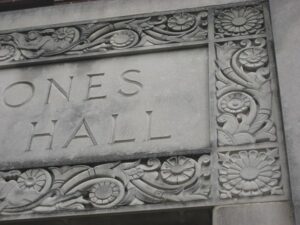I wrote about Rockland Community College, in Suffern, NY a couple of times late last year. RCC, which is part of the SUNY system, found itself with a $3.5M budget deficit. To correct that, the RCC administration proposed a combination of furloughs and layoffs. Initially, the administration proposed laying off nine individuals, and subjecting the rest of the staff to nine furlough days between January 2024 and June 30, 2024.
So, as you might imagine, the cuts didn’t stop there. The RCC administration is now proposing nineteen additional job cuts. Purportedly, the positions scheduled for elimination are either currently open or are filled with people who will retire soon. Additionally, RCC’s budget deficit is now $8M.
The structural budget deficit (the overcommitment of funds) is $3.5M, but RCC needs to cut more than twice that out of a $67M budget. The cuts amount to about 12% of the institution’s budget. That’s a big chunk of change, and there’s no way these cuts aren’t going to hurt.
RCC’s faculty has already issued its vote of no confidence in the new president (who took over last fall) and in the Board of Trustees. As with the overwhelming majority of no-confidence votes I’ve seen over the years, this one will go ignored.
Vote of no confidence, budget deficit causes shouldn’t be ignored
It shouldn’t. The Board should not ignore a budget deficit of 12%. Likewise, the Board shouldn’t ignore the fact that the State of New York had to float the school a $7M advance on “future aid.”
Future aid is meant to cover future expenses, so kicking a financial can down the road isn’t really a solution. Sure – it puts money in the coffers right now, but that money is next month’s rent. As a solution, it imagines that replacement money will somehow come from somewhere in time to avoid the inevitable.
The $8M budget deficit and the $7M payday loan from the state are both red flag signals of enormous financial mismanagement, reckless spending, and expense monitoring failures all over the place. An institution does not acquire an $8M budget deficit, and $7M worth of cash flow problems either overnight or by accident.
RCC’s enrollment has declined by nearly 29% over the last decade. Its credit hour delivery has dropped by nearly 37% over the same time. That signaled the need for reductions in spending to avoid tuition increases and to make up for what RCC claims was a decline in state funding. The current plan is to raise tuition by $15 per credit hour to $243 for residents. That doesn’t include a new $150 student support fee the board is considering. The tuition and fee increases probably also don’t contemplate the substantial number of students the school will lose as the result of rising attendance costs.
I stand by my original position that an institution’s administration is fully responsible for its gross financial problems. Administrative inaction is a major contributor to RCC’s current circumstances. The only viable solution involves eliminating the problems’ sources.
Photo Credit: 401(k) 2012






























